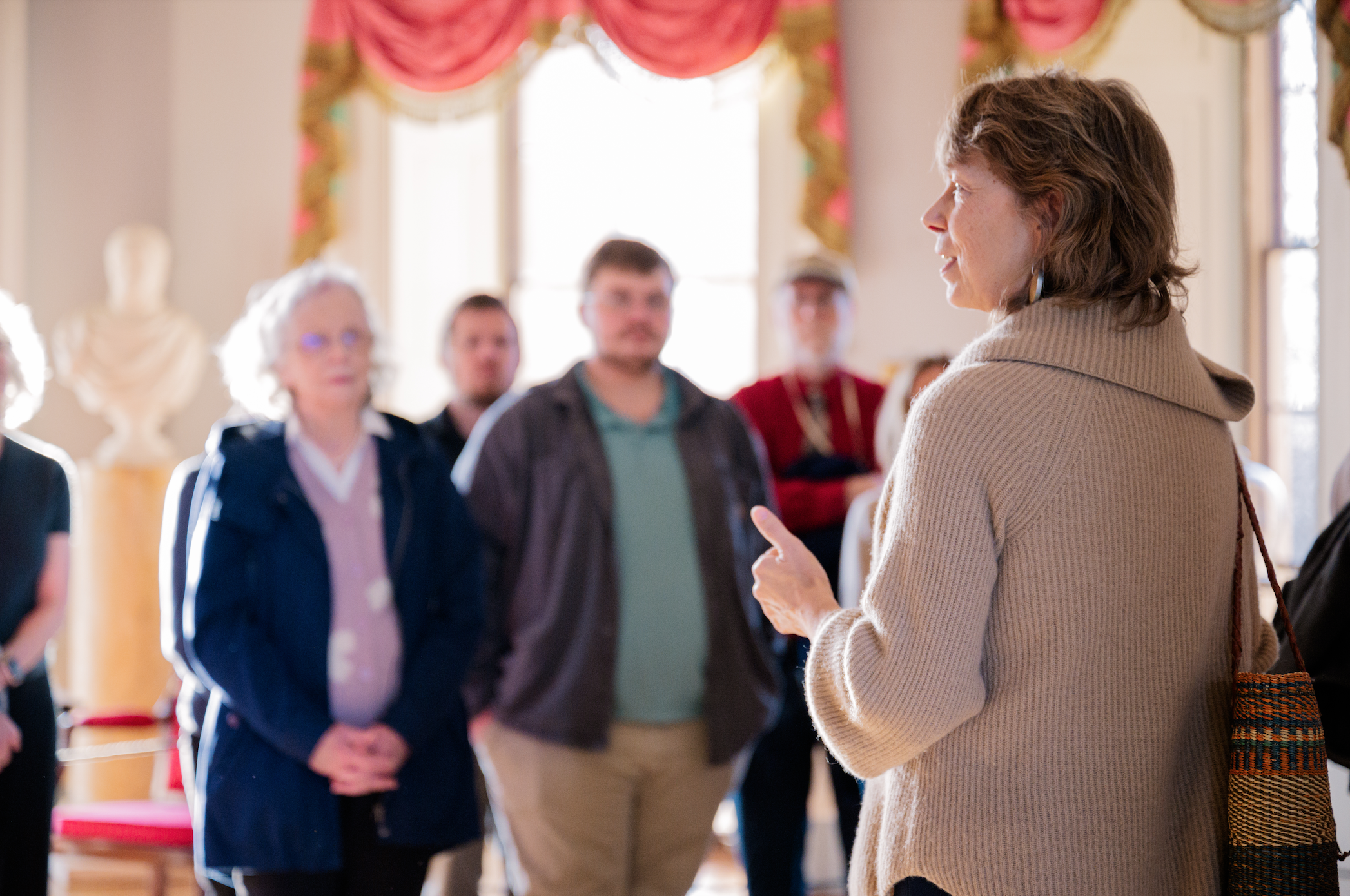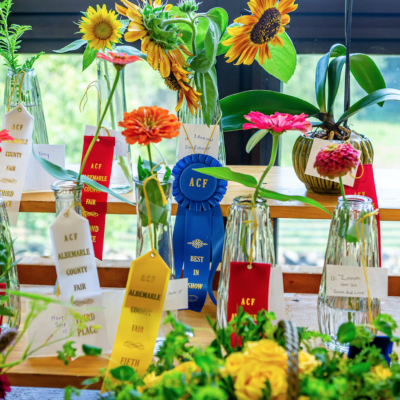I’m on my way to interview Travis Croxton, the award-winning seafood magnate who recently opened Rocksalt in the Shops at Stonefield, and I’m famished. This is a bad thing. Rarely do my trips to interview a person in the food biz actually result in getting to eat some food.
This time, I’m in luck. It seems Croxton, who’s engaged in an employee meeting when I walk into the slick new raw bar and grill, is hungry too. And thirsty. He hops up from his table, suggests a beer, heads to the bar, and comes back with a menu of local craft options. We order a couple pints, and Croxton says he has some oysters on the way out.
When the food gets to the table, things take another tasty turn. Instead of a few of Croxton’s own farm-raised oysters, our waiter’s turned up with a full raw bar sampler: oysters, clams, shrimp, and mussels are piled on popcorn ice studded with lemon wedges and served alongside house-made cocktail sauce, mignonette (a vinegar-based condiment), and shaved horseradish.
As we start to dig in, it’s clear I’m not only going to be treated to some tasty seafood, I’m getting a lesson in raw shellfish from a bona fide pro. Croxton, who owns six other oyster restaurants in D.C., Richmond, and Toppings, Virginia, and who was recently named one of the top 24 restaurant players in the U.S. by Zagat, has been knocking around his family’s Rappahannock River-based oyster farm since he was a kid. When his family decided they were letting go of the farm in the early 2000s, Croxton and his cousin Ryan kept it—and revived it—for nostalgic reasons.
“I remember going to my grandfather’s house, and he was always shucking oysters into a pint jar, just really cool stuff,” he says. “You got in his truck, and it smelled like a mix of seafood, cigarettes, and diesel. I hate the smell of cigarettes, but that combination with diesel and seafood was awesome.”
Croxton goes right for the clams when the seafood sampler hits the table. “I want to get more people eating raw clams,” he says, suggesting a dab of cocktail sauce really makes them pop. Turns out the clams (full disclosure: not my favorite raw seafood) are bred directly under the Croxton family oyster beds. Where the more popular mollusks are raised up out of the sand and mud to plump them, the clams do just fine burrowed right into the sand, Croxton says.
The shrimp and mussels on the tray are not Croxton’s own. Mussels don’t thrive in waters this far south, he laments, so he sources those out of Maine, steams them and serves them cold. The shrimp are also from Maine, but starting the next day, Croxton says they’ll be out of North Carolina. Mostly, he just prefers the Carolina shrimp. Dipped in Rocksalt’s smooth cocktail sauce and topped with a bit of shaved horseradish (the mild sauce won’t mind the extra kick), the Maine shrimp do the job.
Done with the Maine event, it’s time for the oysters. Croxton grows four different kinds of Virginia oysters, and three are on display: Rappahannocks, Stingrays, and Olde Salts. The first two are grown in the Rappahannock River, which makes them much less salty than the last, which are grown on an ocean-side farm in Chincoteague. River oysters are typically sweeter than ocean oysters, and there’s a slight difference in brininess between the two because the Rappahannocks are raised farther upstream. If you’re familiar with the way wine grapes are affected by soil, you have a pretty good idea of how oyster flavor develops, Croxton says.
So what’s the best way to attack raw oysters? “I’m happy with however you want to eat,” Croxton says. “I change it every single time.”
For me, a touch of mignonette typically does the trick, and Croxton seems to gravitate toward that method, as well, though he also has a soft spot for horseradish. The Olde Salts, with their intense saltiness, work best for “eating naked” right off the half shell, a move Croxton assures me is not as uncouth as my wife repeatedly tells me. Croxton prefers medium sized oysters (2.75-3-inches) to the hulking ones because of the “meat ratio in your mouth.”
The seafood frenzy complete, Croxton gestures toward the kitchen. While his bailiwick is seafood, he’s quite proud of the concept at Rocksalt, which he envisions being a 60-40 split between seafood and land-based proteins. The centerpiece of the Rocksalt kitchen is a live-fire grill manned by new chef Michael Fitzhugh and former Brookville sous chef Dylan Allwood.
“The proteins we get, cooked on the live fire, are amazing,” Fitzhugh says, sitting down next to Croxton. “It’s a beautiful piece of equipment.”
One does fear Charlottesville could end up with the short end of the skewer when it comes to Croxton’s restaurant empire. The sleek, corporate logo on the shaker pint my beer was served in tells me immediately this concept is chain-ready, and Croxton confirms three more Rocksalts, in Fairfax, Charlotte, and Asheville, are coming by May next year. Certainly, Croxton has earned the success—Rappahannock in Richmond was named one of Esquire’s Best New Restaurants of 2014 last week—but can he maintain the kind of close quality control and quirky uniqueness that has made his oyster bars great in the past if his restaurant empire swells? Or will C’ville’s Rocksalt outpost become yet another chain spot associated with its captain in name only?
Hopefully someone has a perfume of tobacco, truck fuel, and shellfish on hand to bring Croxton back if he ever goes astray.




